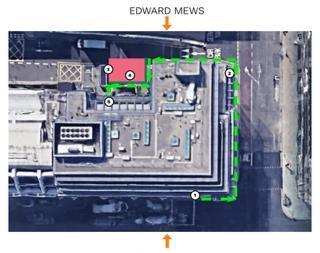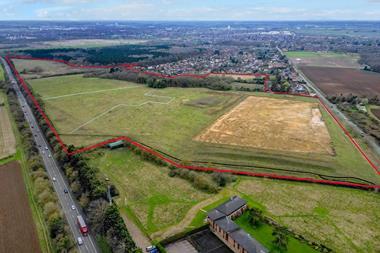In 2011, just over three quarters of student beds in London were under university control, but by 2017 that figure had fallen to 55%.

The fall is largely down to the rapid growth in the development of private student housing. While this has helped increase the overall provision of student accommodation in the capital, much of the new stock comprises studios aimed at wealthy foreign students.
This is a market that has become “saturated”, according to Dr Ghazwa Alwani-Starr, director of property and facilities management at the University of London, which is looking to redress the balance by embarking on a major programme of development.
As a first step to tackle what it estimates is a shortfall of 11,500 beds in the capital, it is calling on the industry for proposals to help it deliver 2,500 new beds as soon as is practically possible.
As well as increasing the provision of student housing, Alwani-Starr also wants to transform what that housing looks like and how it connects with university life. She believes that improving student accommodation in the capital is crucial to the long-term future of London’s universities.
Student satisfaction
“London has the highest concentration of top-quality universities in the world but surveys regularly show low levels of student satisfaction,” she says. “Much of that is down to where they live and how much they are paying in rent.”
The University of London’s aim is to provide housing for a broader range of students, including second- and third-year undergraduates, as well as first years. Alwani-Starr says this is important because students living in university accommodation show higher levels of satisfaction than those living in the private rented sector.
The need for more affordable accommodation is all the more acute because growth in student numbers in London over the coming years isn’t expected to come from well-off foreign students. UK undergraduate numbers at University of London colleges are forecast to increase by 4.6% between now and 2022, well above the 1.67% growth forecast in foreign undergraduate numbers.
To help identify potential sites for development, the University of London, with support from the British Property Federation and the Greater London Authority, has created an interactive mapping tool, which was launched this week. Providing information on everything from current provision of student housing to usage data for academic buildings, it is designed to encourage more co-ordination between developers, councils and higher-education institutions in the capital.

Alwani-Starr says the University of London is open to different proposals and is happy to structure deals in a variety of ways. However, she adds that she is particularly interested in holding discussions at an early stage on regeneration projects, citing Euston station and Canada Water as examples.
She is keen to see student accommodation better integrated into student life. At a minimum, the University of London is looking for sites that are within a half-hour commute of its sites, but it is also hoping to develop student housing and academic buildings together. This could involve building student accommodation above teaching buildings.
“We would love to do that but it would require a critical mass of academic space,” says Alwani-Starr. She is also keen to underline the benefits to private sector developers of signing up a university, pointing to the positive impact of Central Saint Martins at King’s Cross.
“If we go in as a partner then we reduce financial risk to a large extent and that should be reflected in the prices we are quoted,” she adds.
The message is clear. While the University of London is looking hard for new sites, that doesn’t mean it will be a soft negotiator.































No comments yet